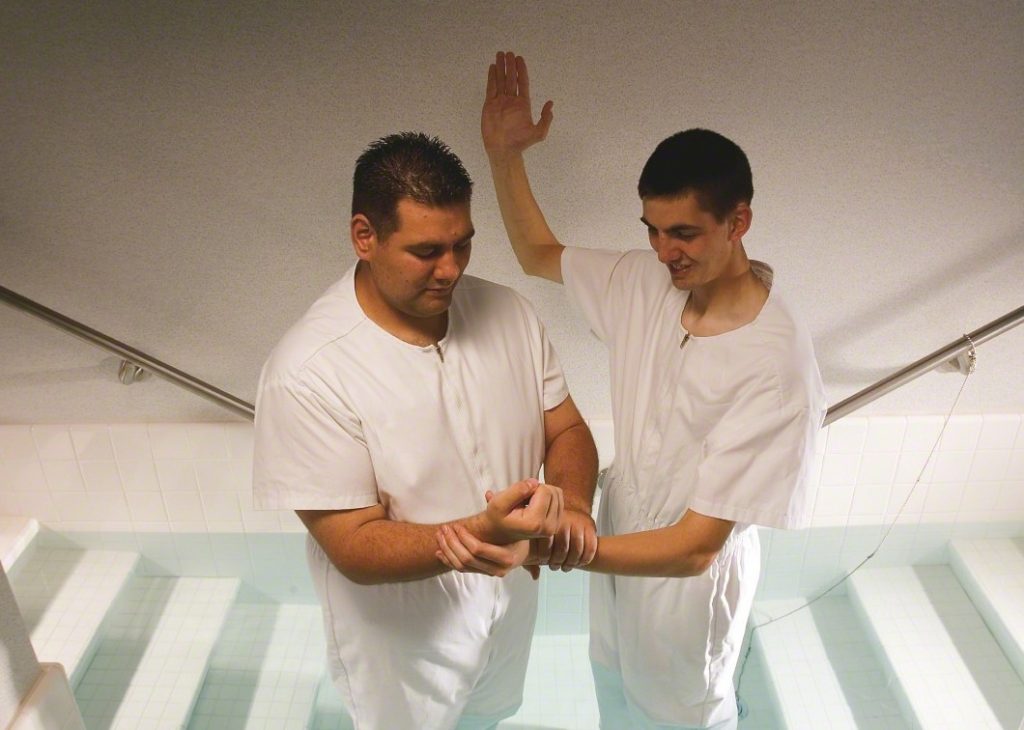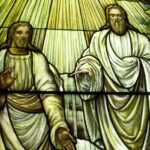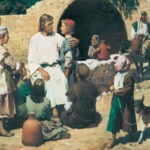Why Do Latter-day Saints Perform Baptisms for the Dead?
Latter-day Saints often field questions and criticisms for one of their more distinctive practices, baptisms for the dead. Understanding baptisms for the dead requires understanding both the Biblical doctrines of baptism and the plan of salvation.
The Baptismal Ordinance

The Church of Jesus Christ of Latter-day Saints teaches that certain ordinances are required to follow Jesus Christ. Latter-day Saints use the term “ordinance” in similar ways to how other faiths use the term “sacrament.”
An ordinance contains several elements:
- A promise to God
- Blessings from God
- Symbolism
- Proper authority
Latter-day Saints often describe ordinances as outward expressions of inner promises to follow Jesus Christ. Baptism symbolizes rebirth and is performed by priesthood holders who trace their priesthood authority to Jesus Christ Himself.
The process of making promises to God and receiving blessings in return is called a covenant. There are many examples of covenants in the Bible. Baptism is one covenant anyone can choose to make.
Promises made at Baptism
- Comfort those in need
- Stand as a witness of God
- Keep the Commandments
- Always remember Christ
Blessings Received at Baptism
- The Gift of the Holy Ghost
- Membership in Christ’s Church
- An opportunity at salvation.
These covenants can be found in scripture.
Jesus taught in John 3:5:
[quote_box_center]Except a man be born of water and of the Spirit, he cannot enter into the kingdom of God.[/quote_box_center]
Like many Christians, Latter-day Saints understand this verse to mean that unless someone is baptized they do not have the opportunity to return to live with God.
Baptism for All People

Many observers see the doctrine of baptism for salvation as extremely cruel. Only a small percentage of people who have lived on Earth ever had the opportunity to learn about Jesus Christ and follow Him through baptism.
Latter-day Saints who know that God loves all of His children must be able to reconcile the requirement of baptism with God’s love for those who never had the opportunity. Fortunately, God provided a way.
The apostle Peter taught that those who died would still be taught the Gospel and would have the opportunity to accept it before their final judgment.
Paul also mentions in his writing something called baptism for the dead. Most Christians can’t explain what Paul means, and largely dismiss the verse because baptism for the dead is only mentioned once.
As a prophet, however, Joseph Smith was able to ask God about baptism for the dead. He received the answer as to how baptism for the dead was supposed to function.
By combining preaching to the dead with baptism for the dead, all of God’s children, even those who died without hearing about Christ, will have an opportunity for salvation.
Baptism for the dead explains how God can both require baptism of His children and be all-loving.
How Are Baptisms for the Dead Performed
Baptism for the dead must be performed for individual people. So the first step is to find those people. Latter-day Saints research their own family history to find their ancestors who were not baptized. Latter-day Saints then submit the names of their ancestors for baptism.
While Latter-day Saints are instructed to only submit their ancestors’ name, ensuring this can be very difficult. Those who are found to repeatedly break this rule have the privilege of submitting names for baptism revoked.
Baptism for the dead is performed in temples. A priesthood holder and another church member enter into a baptismal font. The other member acts as a surrogate, or a stand-in, for the deceased. She or he is baptized in the same manner as a living church members would be. There are slight alterations to the words of the prayer to acknowledge that the baptism is being performed for someone who has passed.
The deceased person for whom the baptism can be performed is then free to accept or reject the baptism. In this way, every person will have the opportunity to return to live with God.
Latter-day Saints often feel the same zeal toward baptisms for the dead that they feel toward missionary work. Latter-day Saints understand baptisms for the dead as a great work of love to all of our brothers and sisters.




